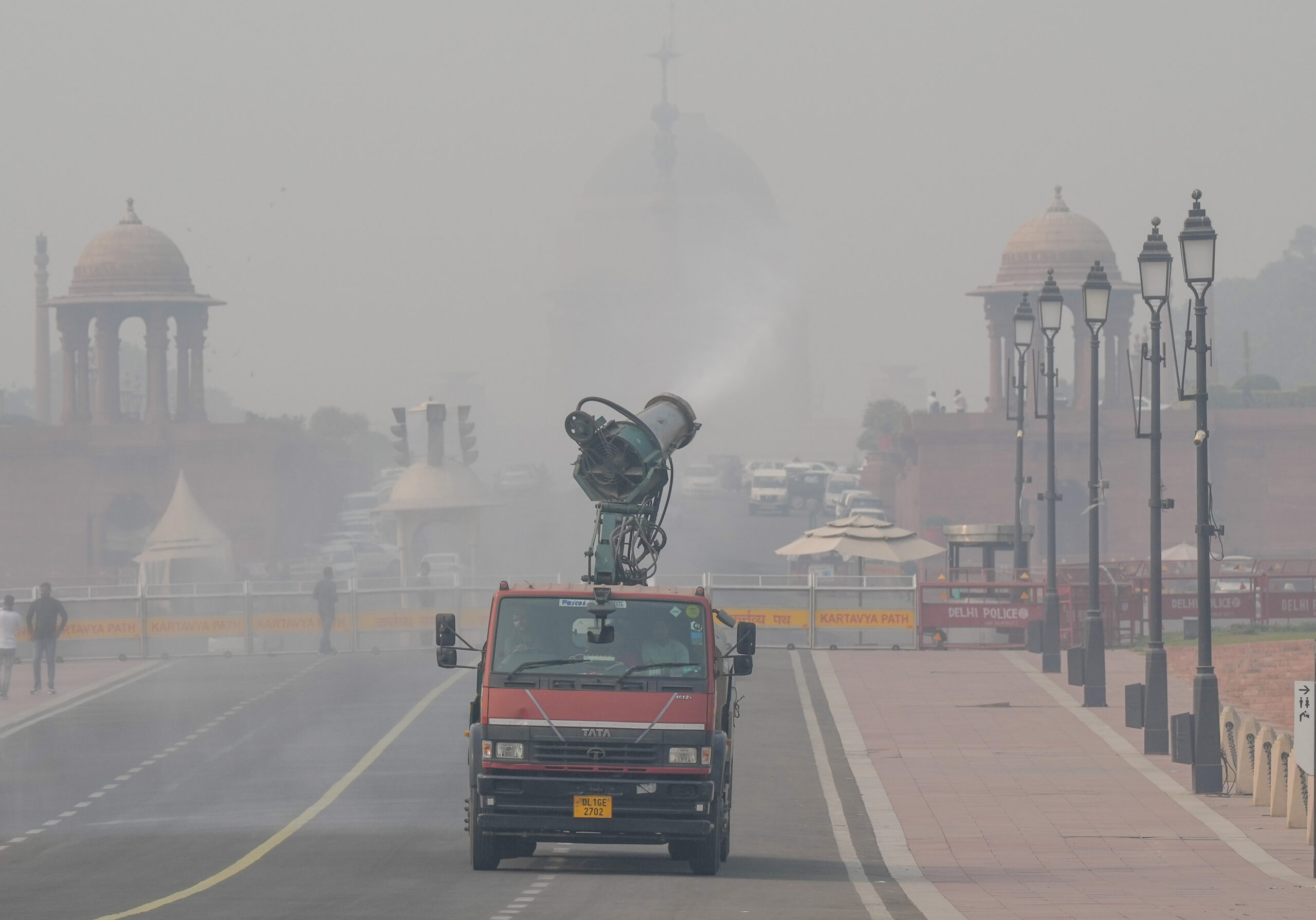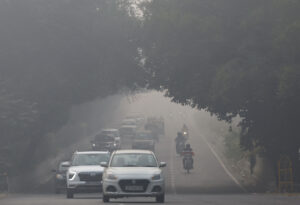- Thursday, February 06, 2025
The Delhi government is pushing for inducing artificial rain over the city and sought prime minister Narendra Modi’s intervention

By: Shajil Kumar
RESIDENTS in India’s northern states woke up to another day of poor air quality on Tuesday, as a layer of dense fog shrouded most of the region and pollution in the capital Delhi remained severe.
The air quality index (AQI) touched a peak of 491 in Delhi on Monday, forcing the government to restrict vehicle movement and construction activities, and urge schools to conduct classes online.
The Delhi government on Tuesday pushed for inducing artificial rain over the city and sought prime minister Narendra Modi’s intervention.
Technically, Delhi’s air quality improved slightly with the Air Quality Index dropping to 460 from 490 the previous day, but it is still in the severe-plus category.
Delhi’s environment minister Gopal Rai urged the Centre to convene an emergency meeting to deal with the situation and approve inducing artificial rain over the national capital.
Out of the 32 air monitoring stations in the capital city, 23 reported Air Quality Index (AQI) above 450, which denotes the highest severe-plus category.
At 4 pm on Tuesday, CPCB data recorded PM2.5 level at 307, which was the prominent pollutant. The PM2.5 particles with have a diameter of 2.5 micrometers or less, roughly the width of a human hair.
Meanwhile, the Delhi government directed all its hospitals to constitute teams of specialists for patients with respiratory ailments due to the severe air pollution, officials said.

The Delhi Health Department also asked the hospitals to monitor and report daily cases of respiratory ailments, including both outpatient (OPD) and inpatient (IPD) cases, and to promptly flag any unusual increase in the number of cases, it said.
According to the Centre’s Decision Support System (DSS) for Air Quality Management, vehicular emissions contributed an estimated 16 per cent to Delhi’s pollution on Tuesday. Data on contribution by stubble burning was not provided for the second consecutive day.
Daily wage workers hit
With a ban on construction activities as part of restrictions under the fourth stage of Graded Response Action Plan (GRAP), daily wage workers said their livelihoods would be badly affected.
Suman (45), a resident of Madhya Pradesh who currently works at a construction site in Delhi’s Rohini, said, “If we sit at home, what will we eat? What will we feed our children?”
She recently renewed her labour card with the hope of receiving government aid but she said it has been futile.
“We don’t have government jobs where salaries come automatically. We survive on daily earnings, and without work, we have nothing,” said the mother of two.
On Monday, the Supreme Court directed all Delhi-NCR states to immediately set up teams to strictly enforce anti-pollution GRAP 4 restrictions, making it clear that the curbs cannot be lifted without its orders.
Traders affected
Several associations representing traders said footfall in the city’s markets has dropped significantly due to the rising air pollution.
Rakesh Yadav, the president of the Sadar Bazar Trades Association, said there is approximately a 15 per cent decline in footfall in the Sadar market compared to usual days.
Sanjeev Mehra, the president of the Khan Market Traders Association, said there is a sharp 60 per cent drop in footfall since the implementation of Stage IV of the Graded Response Action Plan (GRAP) from Monday.
“Foot traffic in Khan Market has fallen drastically, and it’s impacting traders, especially small shop owners. These measures are hitting the pockets of small traders,” Mehra added.
Online classes
The dangerous levels of pollution in Delhi and the National Capital Region have forced educational institutions to shun offline classes.
After Delhi University and JNU, Jamia Millia Islamia also announced to shift to online classes as air quality deteriorated.
Delhi’s neighbouring Ghaziabad recorded the AQI at 434, followed by Bahadurgarh (416), Gurugram (402), Hajipur (404), and Hapur (419) also remained in the severe category.
Visibility dropped to zero metres in Uttar Pradesh’s Agra, which lies southeast of Delhi. The Taj Mahal, India’s famed monument, has been obscured by toxic smog for nearly a week.
Mahesh Palawat, Vice President of Meteorology and Climate Change at Skymet Weather, said that until wind speeds increase, AQI is unlikely to see significant improvement.
Wind and rain can help reduce the pollution levels maybe in the next two to three days, he said.
Farm fires
India battles air pollution every winter as cold, heavy air traps dust, emissions, and smoke from farm fires started illegally in the farming states of Punjab and Haryana.
Punjab recorded 1,251 farm fires on Monday, according to the government-run Punjab Remote Sensing Centre.
Tens of thousands of farmers in Punjab and Haryana burn their crop residue at the start of every winter, clearing fields from recently harvested rice to make way for wheat.
The practice is banned but law enforcement is lax, and it remains the cheapest and quickest way for farmers to prepare their fields for the next growing season. (Agencies)